Imagine the thrill of watching a blank digital canvas transform into a vibrant mosaic of color and character—each pixel contributing to a story of creativity and innovation. You might remember the excitement of creating your first pixel character, where every tiny square held endless creative possibilities. That initial spark can evolve into a full-blown passion for digital art, transforming your creative vision into stunning visuals. In this article, you’ll explore a wide range of pixel art ideas, from retro-inspired designs to modern techniques, along with practical DIY projects, essential tools, and inspiring creative applications. Whether you’re a beginner just starting out or a seasoned digital artist looking for new challenges, this guide is designed to fuel your passion and help you master the art of pixel creation.
Table of Contents
Understanding Pixel Art

What Is Pixel Art?
Pixel art is a unique digital art form that involves the deliberate placement of individual pixels to create images. It’s a method that harks back to the early days of video games, where every character and background was formed pixel by pixel on a grid. Today, pixel art has evolved into both an homage to retro aesthetics and a vibrant modern design technique.
- Definition:
Pixel art is a digital medium crafted by carefully placing pixels to form images, often with a grid-based design. - Historical Roots:
Originating in the era of 8-bit and 16-bit video games, pixel art is synonymous with retro graphics and nostalgia. It has now evolved to incorporate modern techniques while retaining its classic charm.
Key Attributes:
- Digital medium using a grid-based approach.
- Emphasizes low resolution and deliberate detail.
- Evolves from retro gaming to contemporary digital design.
Why Pixel Art Matters Today

Pixel art has seen a resurgence, bridging the gap between classic gaming nostalgia and modern digital aesthetics. Its simplicity is not a limitation, but rather an invitation to explore creativity through minimalism and precision.
Why It’s Essential:
- Nostalgia and Modernity:
It taps into the warm memories of retro games while appealing to modern design sensibilities. - Versatility:
Pixel art is perfect for various applications—from social media avatars and app icons to digital prints for home decor. - Creative Flexibility:
Whether you’re designing a character for a video game or a poster for your room, pixel art offers a flexible medium that can be as intricate or as simple as you desire.
Consider this table for a quick overview:
| Aspect | Benefit |
|---|---|
| Nostalgic Appeal | Evokes classic video game memories and retro vibes. |
| Modern Application | Used in branding, digital design, and interactive media. |
| Creative Flexibility | Suitable for both beginners and experienced artists. |
By embracing pixel art, you gain a creative tool that is both nostalgic and modern—a medium that invites you to express your unique vision in every meticulously placed pixel.
Trends and Popular Styles in Pixel Art Ideas
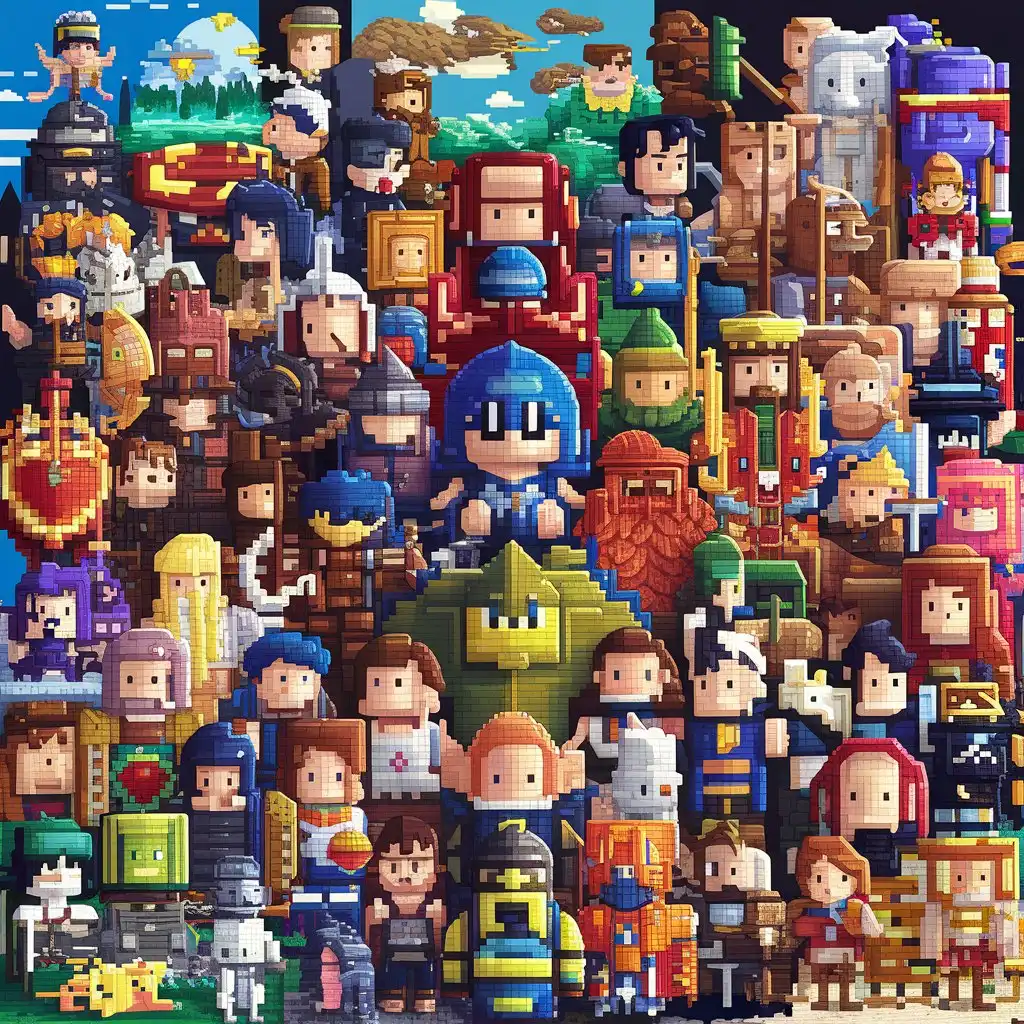
The pixel art landscape is as diverse as it is nostalgic, featuring a blend of retro inspiration and modern innovation. Here are some of the hottest trends and styles currently captivating digital artists.
Trending Pixel Art Styles
Retro and 8-Bit Inspired Designs
Retro pixel art is all about embracing the charm of vintage graphics. Inspired by classic arcade games and early home consoles, these designs are characterized by blocky, colorful imagery and a playful simplicity that transports you back in time.
- Key Characteristics:
- Bold colors, blocky shapes, and a fun, nostalgic feel.
- Often labeled as “8-Bit Pixel Art Designs.”
- Ideal For:
- Fans of vintage gaming aesthetics and retro pop culture.
Isometric and Geometric Pixel Art
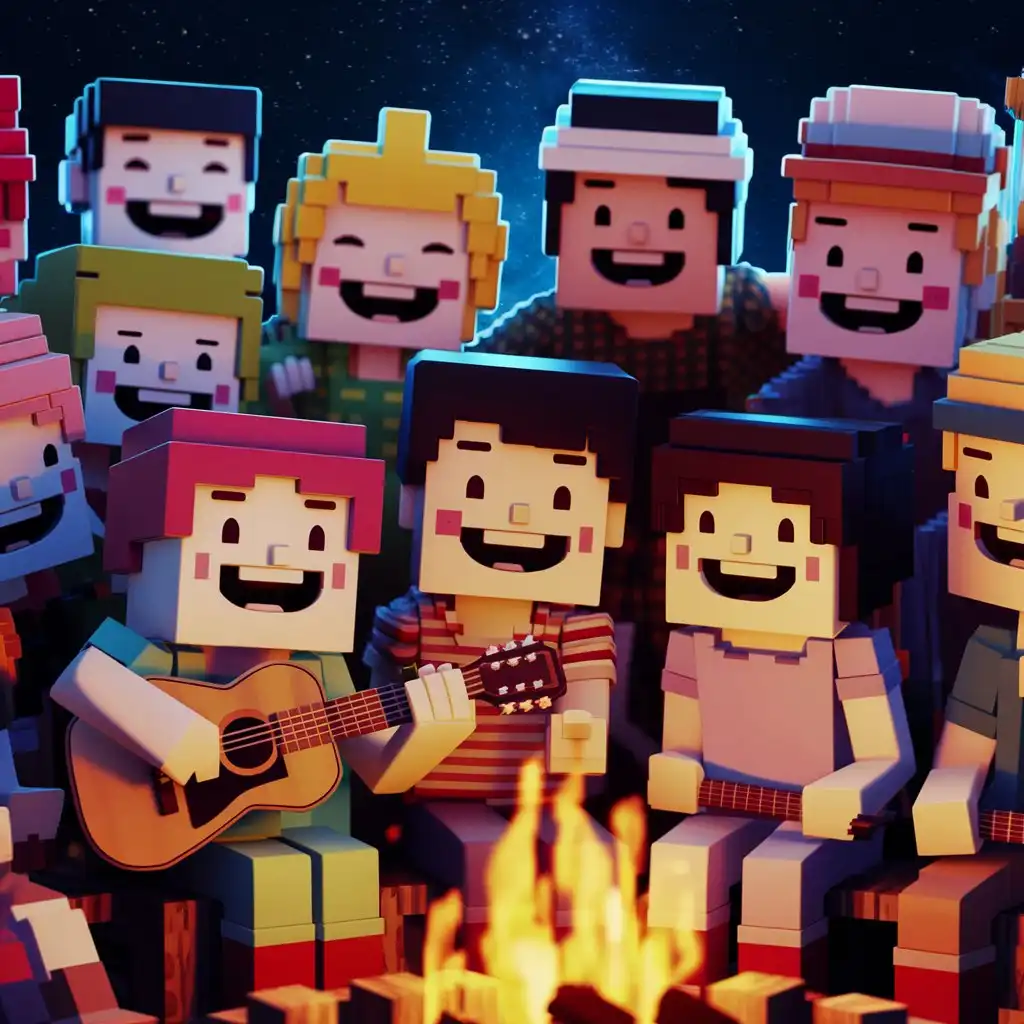
Isometric pixel art uses a unique perspective to create the illusion of 3D space on a 2D plane. Geometric pixel art emphasizes the use of simple shapes, symmetry, and grids to build intricate patterns and scenes.
- Key Characteristics:
- Detailed grid-based designs that create depth and structure.
- Frequently seen in “Isometric Pixel Art” and “Grid Pixel Art Ideas.”
- Ideal For:
- Creating dynamic landscapes, characters, and architectural scenes that seem to pop off the screen.
Cute and Aesthetic Pixel Art

This style focuses on soft, adorable designs that are both charming and accessible. It’s often aimed at beginners or those looking to add a touch of whimsy to their digital creations.
- Key Characteristics:
- Gentle color palettes, rounded shapes, and endearing characters.
- Commonly referred to as “Cute Pixel Art Ideas” or “Pixel Art Ideas Aesthetic.”
- Ideal For:
- Personal projects, social media avatars, and creative expressions for all ages.
Theme-Based and Niche Pixel Art
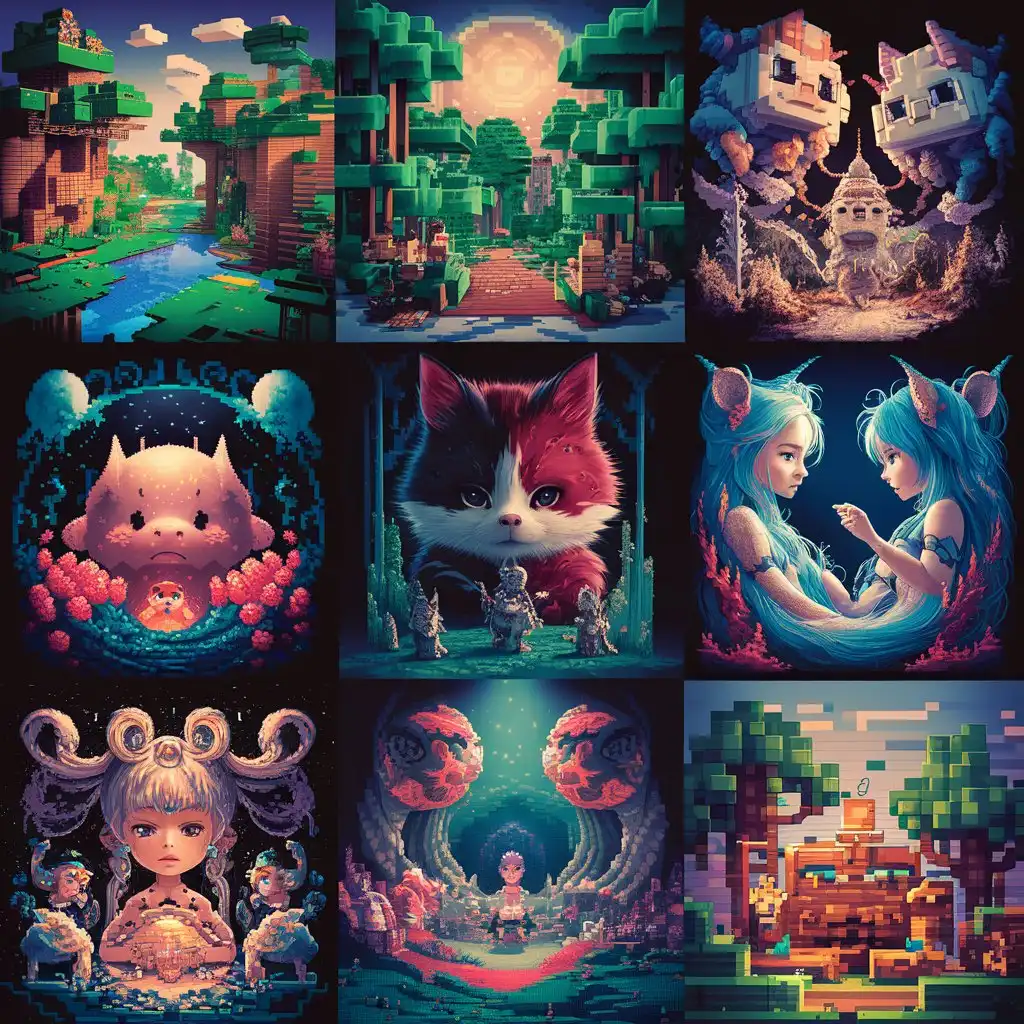
For those with specific interests, pixel art can cater to various niche themes—from Minecraft-inspired designs to fantasy and anime characters. This style allows you to tailor your work to a particular genre or audience.
- Key Characteristics:
- Diverse subject matter that can include anything from gaming icons to cartoonish characters.
- Keywords like “Minecraft Pixel Art Ideas” and “Pixel Art Ideas for Kids” are often used.
- Ideal For:
- Projects that require a specific theme or creative concept.
DIY Pixel Art Projects and Techniques
One of the most exciting aspects of pixel art is its accessibility for DIY projects. Whether you’re looking to start with something simple or push your creative boundaries, here are some practical tips and techniques to help you master pixel art.
Essential Tools and Software for Pixel Art
To create pixel art, you’ll need the right tools that can help you work at the pixel level with precision. Here are some popular options:
- Software:
- Aseprite
- Adobe Photoshop
- Piskel (free alternative)
- Hardware:
- A reliable mouse or tablet for precision drawing.
- Additional Resources:
- Online tutorials, YouTube channels, and pixel art communities for inspiration and guidance.
Keywords to include: “Best tools for making pixel art in 2025”, “DIY pixel art ideas.”
Step-by-Step DIY Projects
If you’re ready to dive into creating your own pixel art, follow this step-by-step guide:
- Plan Your Design:
- Sketch your idea on graph paper or create a digital grid using software.
- Focus on simplicity and structure, keeping in mind the retro or minimalist aesthetics.
- Choose Your Palette:
- Select a limited, complementary color palette to maintain the classic pixel art style.
- Experiment with both bold and subtle color combinations.
- Create Your Art:
- Use your chosen software to work pixel by pixel.
- Utilize layers to manage different elements of your design.
- Export and Print:
- Save your finished artwork in high resolution (preferably 300 DPI) in formats like JPEG or PNG.
- Consider printing your art to display it as wall decor or use it digitally.
- Refine Your Work:
- Share your designs with online communities for feedback and iterate on your style.
Tip: Experiment with different styles—whether minimalist, retro, or isometric—to find what resonates best with your creative vision.
Creative Ideas for Pixel Art Applications
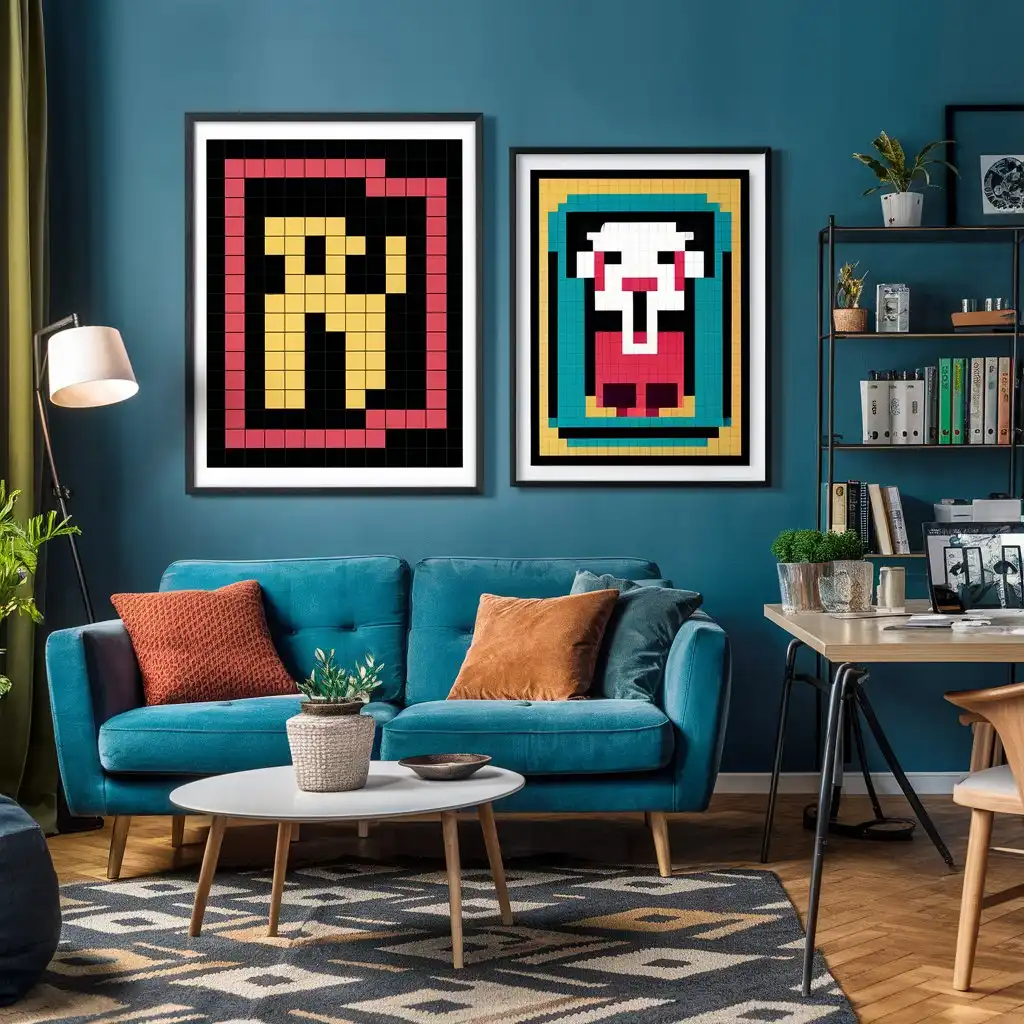
Your pixel art can be more than just digital images; it can be a versatile part of your everyday life. Here are some creative ways to use pixel art:
Pixel Art for Home and Office
- Digital Wall Decor:
- Print your pixel art designs and frame them to create striking wall art.
- Use high-resolution prints to add a modern, retro touch to your living room or office.
- Branding and Marketing:
- Create pixel art logos or social media avatars that stand out with their nostalgic appeal.
- Personal Projects:
- Turn your pixel art into greeting cards, posters, or custom merchandise to showcase your creativity.
Keywords: “Pixel Art Ideas”, “Easy Pixel Art Ideas”, “Pixel Art Ideas Cute.”
Niche and Thematic Pixel Art Projects
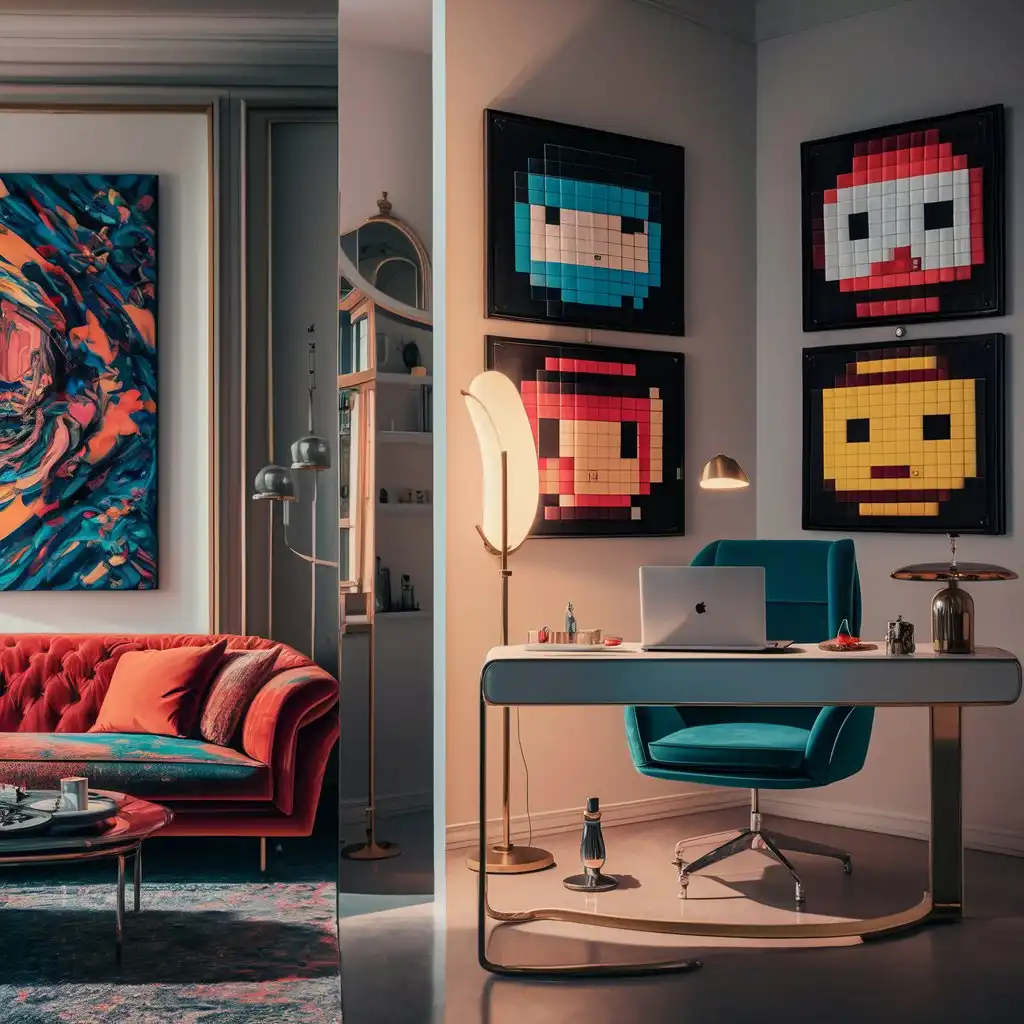
- Gaming Inspiration:
- Draw inspiration from classic video games to create retro pixel art characters and environments.
- Fantasy and Anime:
- Use pixel art to design characters or scenes inspired by anime and manga, offering a modern twist on traditional art.
- Seasonal Themes:
- Develop pixel art projects around seasonal events or holidays, such as festive pixel designs for Christmas or Halloween.
- Practical Tips:
- Mix and match different styles for a cohesive look.
- Consider creating a series or collection that tells a story through your pixel art.
Keywords: “Pixel art ideas inspired by retro video games”, “Pixel art ideas for kids.”
Frequently Asked Questions (FAQ) About Pixel Art Ideas
What is pixel art and how do I start?
Pixel art is a digital art form that creates images pixel by pixel, often using grid-based software. To start, experiment with simple designs using tools like Aseprite or Piskel.
What are the best tools for creating pixel art?
Popular tools include Aseprite, Adobe Photoshop, and free alternatives like Piskel. A good mouse usually works, though some artists prefer drawing tablets.
How do I choose a color palette for pixel art?
Focus on using a limited, complementary color palette. Research “color palette tips for pixel art designs” for inspiration and experiment with different combinations.
Can pixel art be used in professional projects?
Absolutely! Pixel art is widely used for social media avatars, mobile app icons, game sprites, and digital branding, making it highly versatile.
Where can I find inspiration for pixel art ideas?
Explore retro video games, online pixel art communities, Pinterest, and design blogs dedicated to digital art. These sources offer a wealth of creative ideas ranging from cute, simple designs to complex isometric illustrations.
How can I animate my pixel art?
Use software like Aseprite or Photoshop to create frame-by-frame animations. Experiment with simple animations like blinking or walking cycles to start.
Can I create pixel art on a mobile device?
Yes, there are apps available that allow you to create pixel art on mobile devices, though a desktop or tablet might offer more precision.
How do I add depth to my pixel art landscapes?
Incorporate techniques like isometric perspective, shading, and color gradients. Experiment with different levels of detail to create a sense of depth and dimension.
What are some trending pixel art styles for 2025?
Trending styles include retro-futurism, isometric designs, and anime-inspired pixel art. These styles combine nostalgic elements with modern aesthetics.
Can I sell my pixel art online?
Yes, many artists sell pixel art through platforms like Etsy, Itch.io, or even as NFTs on specialized marketplaces. Sharing your art on social media can also help build a following.
Conclusion – Unleash Your Pixel Creativity
Pixel art is more than just a nostalgic homage to early video games—it’s a dynamic, versatile medium that offers endless creative possibilities. Whether you’re drawn to the charming simplicity of retro 8-bit designs or the intricate detail of isometric pixel art, there’s no limit to what you can create.
Imagine turning your digital canvas into a vibrant display that not only captivates the eye but also reflects your personal style and vision. From practical DIY projects to professional applications in branding and marketing, pixel art offers you a unique way to express yourself in the digital age.
Call-to-Action:
Now is the time to unleash your creativity. Dive into our tutorials, experiment with new tools, and share your pixel art masterpieces with the community using the hashtag #PixelArtIdeas. Subscribe to our newsletter for more expert tips and inspiration on digital art. Start your pixel art journey today and transform your creative vision into a captivating digital masterpiece!
This article has provided you with an in-depth exploration of pixel art ideas—from understanding its roots and benefits to practical DIY projects and professional applications. Enjoy the process, and let every pixel tell your unique story!
